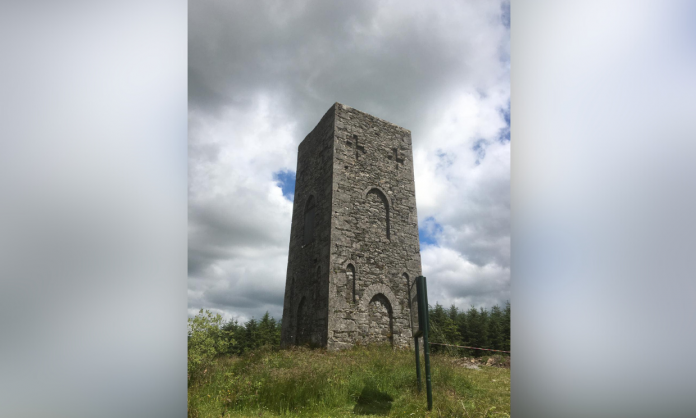By Sean Ryan
One of the few benefits of our recent lockdown during Covid restrictions is that people all over the country get to discover some of our country’s beautiful and historic buildings. One recent trip to the village of Grange in County Tipperary brought this author in contact with the historic Wellington Tower.
Grange is a small village in the Slieveardagh Hills on the Tipperary border with County Kilkenny. It lies just east of the magnificent ruin of Kilcooley Abbey which was founded in 1182 and just 10 kilometres from the county Kilkenny hurling powerhouse of Tullaraon. Grange derives its name from it being an out-farm or Gainseach of Kilcooley.
The history of the beautiful tower is also set in world events. The famous Battle of Waterloo took place on Sunday June 18th 1815 at the village of Waterloo just South of Brussels in Belgium. The forces of the French Empire under Napoleon Bonaparte were defeated by those consisting of a coalition of European States including a Prussian army under the command of Gebhard Von Blucher and an Anglo Allied Army under the command of an Irish born soldier who was a member of the British army namely Athur Wellesey known more commonly as the Duke of Wellington.
It was a decisive battle and of course it was Napoleon’s last. Approximately 47,000 men died or were wounded in the fighting and in Wellington’s own words ‘A damn close run thing’’. The defeat did put an end to Napoleon’s reign and put an end to the Napoleonic Wars. He was soon exiled to the Island of St Helena and died there in 1821.
In Ireland the ruling ascendancy still reeling from the 1798 Rebellion and the landing of French troops in Mayo was particularly uneasy. Therefore the hard fought defeat of Napoleon by The Duke of Wellington a fellow Irishman was greeted with huge relief in the years that followed and a host of monuments such a the Wellington Tower in Grange was built in this case by Sir William Barker.
In the aftermath of the Battle of Waterloo the relieved and grateful residents of several parts of the then United Kingdom of Britain and Ireland resolved to commemorate the victory of the Duke of Wellington. A number of projects to erect monuments were organised. Some were privately funded such as Sir William Barker’s monument on Grange, Crag.
Sir William Barker, the then landlord of Kilcooley Abbey estate organised a large structure to be erected in commemoration of the Duke of Wellington’s victory over Napoleon Bonaparte at the Battle of Waterloo two years previously. The Wellington Monument has a finely carved dedication stone on its 15-foot-high west or ´front end´. The south side is also impressive, but the remaining side of the monument is half the ‘Light’ and clearly shows that the structure was designed to be viewed from the west and from Sir William’s manor house at Kilcooley a mile away.
The monument – technically called a folly, became completely hidden by forestry in latter years and its reappearance in the early 1990’s, following Coillte’s clear felling was a pleasant surprise to all. Much of this area near the tower and the Grange walk loop is cared for the Grange Development Association who judging by the huge number of visitors to the area have it in pristine condition.
Grange of course is not the location for the most famous Wellington monument. This location most definitely falls to the Wellington monument or Wellington Testimonial in the Phoenix Park in Dublin. However The Wellington Monument in Grange is certainly one of the country’s hidden gems.








